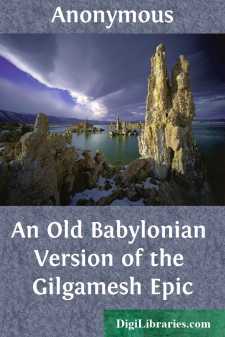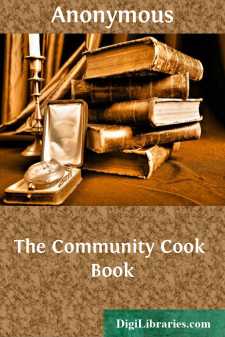Categories
- Antiques & Collectibles 13
- Architecture 36
- Art 48
- Bibles 22
- Biography & Autobiography 813
- Body, Mind & Spirit 142
- Business & Economics 28
- Children's Books 15
- Children's Fiction 12
- Computers 4
- Cooking 94
- Crafts & Hobbies 4
- Drama 346
- Education 46
- Family & Relationships 57
- Fiction 11828
- Games 19
- Gardening 17
- Health & Fitness 34
- History 1377
- House & Home 1
- Humor 147
- Juvenile Fiction 1873
- Juvenile Nonfiction 202
- Language Arts & Disciplines 88
- Law 16
- Literary Collections 686
- Literary Criticism 179
- Mathematics 13
- Medical 41
- Music 40
- Nature 179
- Non-Classifiable 1768
- Performing Arts 7
- Periodicals 1453
- Philosophy 64
- Photography 2
- Poetry 896
- Political Science 203
- Psychology 42
- Reference 154
- Religion 513
- Science 126
- Self-Help 84
- Social Science 81
- Sports & Recreation 34
- Study Aids 3
- Technology & Engineering 59
- Transportation 23
- Travel 463
- True Crime 29
An Old Babylonian Version of the Gilgamesh Epic
by: Anonymous
Description:
Excerpt
Introduction.
The Gilgamesh Epic is the most notable literary product of Babylonia as yet discovered in the mounds of Mesopotamia. It recounts the exploits and adventures of a favorite hero, and in its final form covers twelve tablets, each tablet consisting of six columns (three on the obverse and three on the reverse) of about 50 lines for each column, or a total of about 3600 lines. Of this total, however, barely more than one-half has been found among the remains of the great collection of cuneiform tablets gathered by King Ashurbanapal (668–626 B.C.) in his palace at Nineveh, and discovered by Layard in 1854 in the course of his excavations of the mound Kouyunjik (opposite Mosul). The fragments of the epic painfully gathered—chiefly by George Smith—from the circa 30,000 tablets and bits of tablets brought to the British Museum were published in model form by Professor Paul Haupt; and that edition still remains the primary source for our study of the Epic.
For the sake of convenience we may call the form of the Epic in the fragments from the library of Ashurbanapal the Assyrian version, though like most of the literary productions in the library it not only reverts to a Babylonian original, but represents a late copy of a much older original. The absence of any reference to Assyria in the fragments recovered justifies us in assuming that the Assyrian version received its present form in Babylonia, perhaps in Erech; though it is of course possible that some of the late features, particularly the elaboration of the teachings of the theologians or schoolmen in the eleventh and twelfth tablets, may have been produced at least in part under Assyrian influence. A definite indication that the Gilgamesh Epic reverts to a period earlier than Hammurabi (or Hammurawi) i.e., beyond 2000 B. C., was furnished by the publication of a text clearly belonging to the first Babylonian dynasty (of which Hammurabi was the sixth member) in CT. VI, 5; which text Zimmern recognized as a part of the tale of Atra-hÐÐЮasis, one of the names given to the survivor of the deluge, recounted on the eleventh tablet of the Gilgamesh Epic. This was confirmed by the discovery of a fragment of the deluge story dated in the eleventh year of Ammisaduka, i.e., c. 1967 B.C. In this text, likewise, the name of the deluge hero appears as Atra-hÐÐЮasis (col. VIII, 4). But while these two tablets do not belong to the Gilgamesh Epic and merely introduce an episode which has also been incorporated into the Epic, Dr. Bruno Meissner in 1902 published a tablet, dating, as the writing and the internal evidence showed, from the Hammurabi period, which undoubtedly is a portion of what by way of distinction we may call an old Babylonian version. It was picked up by Dr. Meissner at a dealer’s shop in Bagdad and acquired for the Berlin Museum. The tablet consists of four columns (two on the obverse and two on the reverse) and deals with the hero’s wanderings in search of a cure from disease with which he has been smitten after the death of his companion Enkidu....












